Certainly you can just render your circular UIBezierPath with the selected dash pattern:
class DashedCircleView: UIView {
private var shapeLayer: CAShapeLayer = {
let shapeLayer = CAShapeLayer()
shapeLayer.strokeColor = UIColor.red.cgColor
shapeLayer.fillColor = UIColor.clear.cgColor
shapeLayer.lineWidth = 10
shapeLayer.lineCap = .round
shapeLayer.lineDashPattern = [20, 60]
return shapeLayer
}()
override init(frame: CGRect = .zero) {
super.init(frame: frame)
configure()
}
required init?(coder aDecoder: NSCoder) {
super.init(coder: aDecoder)
configure()
}
override func layoutSubviews() {
super.layoutSubviews()
updatePath()
}
}
private extension DashedCircleView {
func configure() {
layer.addSublayer(shapeLayer)
}
func updatePath() {
let rect = bounds.insetBy(dx: shapeLayer.lineWidth / 2, dy: shapeLayer.lineWidth / 2)
let radius = min(rect.width, rect.height) / 2
let center = CGPoint(x: rect.midX, y: rect.midY)
let path = UIBezierPath(arcCenter: center, radius: radius, startAngle: 0, endAngle: .pi * 2, clockwise: true)
shapeLayer.path = path.cgPath
}
}
That yields:

The problem with that approach is that it’s hard to get the dashed pattern to line up (notice the awkward dashing at the “3 o’clock” position). You can fix that by making sure that the two values of lineDashPattern add up to some number that evenly divides into the circumference of the circle (e.g. 2π × radius):
let circumference: CGFloat = 2 * .pi * radius
let count = 30
let relativeDashLength: CGFloat = 0.25
let dashLength = circumference / CGFloat(count)
shapeLayer.lineDashPattern = [dashLength * relativeDashLength, dashLength * (1 - relativeDashLength)] as [NSNumber]
Alternatively, rather than using lineDashPattern at all, you can instead keep a solid stroke and make the path, itself, as a series of small arcs. That way I can achieve the desired dashed effect, but ensuring it’s evenly split into count little arcs as we rotate from 0 to 2π:
class DashedCircleView: UIView {
private var shapeLayer: CAShapeLayer = {
let shapeLayer = CAShapeLayer()
shapeLayer.strokeColor = UIColor.red.cgColor
shapeLayer.fillColor = UIColor.clear.cgColor
shapeLayer.lineWidth = 10
shapeLayer.lineCap = .round
return shapeLayer
}()
override init(frame: CGRect = .zero) {
super.init(frame: frame)
configure()
}
required init?(coder aDecoder: NSCoder) {
super.init(coder: aDecoder)
configure()
}
override func layoutSubviews() {
super.layoutSubviews()
updatePath()
}
}
private extension DashedCircleView {
func configure() {
layer.addSublayer(shapeLayer)
}
func updatePath() {
let rect = bounds.insetBy(dx: shapeLayer.lineWidth / 2, dy: shapeLayer.lineWidth / 2)
let radius = min(rect.width, rect.height) / 2
let center = CGPoint(x: rect.midX, y: rect.midY)
let path = UIBezierPath()
let count = 30
let relativeDashLength: CGFloat = 0.25 // a value between 0 and 1
let increment: CGFloat = .pi * 2 / CGFloat(count)
for i in 0 ..< count {
let startAngle = increment * CGFloat(i)
let endAngle = startAngle + relativeDashLength * increment
path.move(to: CGPoint(x: center.x + radius * cos(startAngle),
y: center.y + radius * sin(startAngle)))
path.addArc(withCenter: center, radius: radius, startAngle: startAngle, endAngle: endAngle, clockwise: true)
}
shapeLayer.path = path.cgPath
}
}
That yields:



